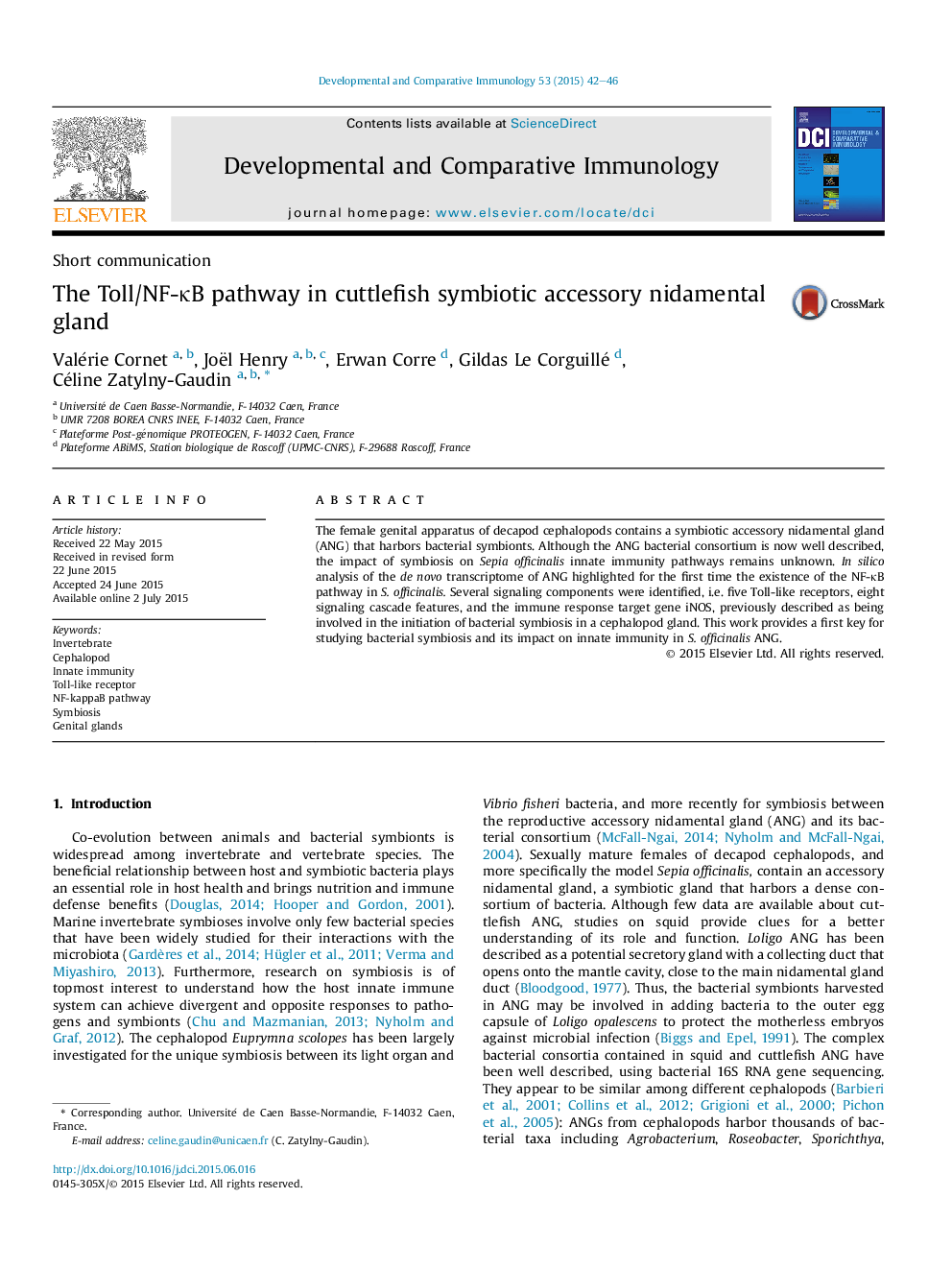| Article ID | Journal | Published Year | Pages | File Type |
|---|---|---|---|---|
| 10971389 | Developmental & Comparative Immunology | 2015 | 5 Pages |
Abstract
The female genital apparatus of decapod cephalopods contains a symbiotic accessory nidamental gland (ANG) that harbors bacterial symbionts. Although the ANG bacterial consortium is now well described, the impact of symbiosis on Sepia officinalis innate immunity pathways remains unknown. In silico analysis of the de novo transcriptome of ANG highlighted for the first time the existence of the NF-κB pathway in S. officinalis. Several signaling components were identified, i.e. five Toll-like receptors, eight signaling cascade features, and the immune response target gene iNOS, previously described as being involved in the initiation of bacterial symbiosis in a cephalopod gland. This work provides a first key for studying bacterial symbiosis and its impact on innate immunity in S. officinalis ANG.
Related Topics
Life Sciences
Biochemistry, Genetics and Molecular Biology
Developmental Biology
Authors
Valérie Cornet, Joël Henry, Erwan Corre, Gildas Le Corguillé, Céline Zatylny-Gaudin,
